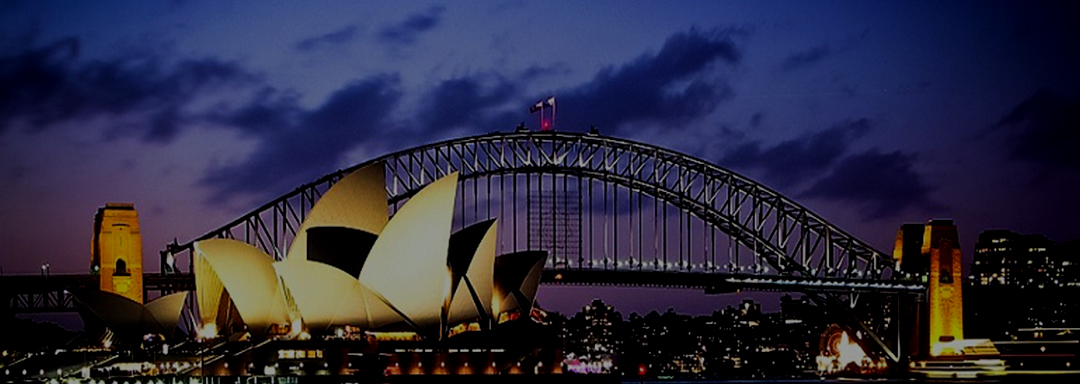
On the 21st March 2017, Opera Australia left the curtain open for the audience to see the Opera Australia and Sydney Opera House crew execute one of the fastest and most complex scene changes in the Company’s repertoire. TheatreArtLife caught up with Opera Australia’s Production Manager, James Wheeler to chat about the epic La Traviata scene change.
James, how did the idea to leave the curtains open during a scene change come about?
The idea was generated by the Publicity department and by the Executive Producer of the show as a way to further engage audiences and to give regular opera goers a chance to actually see what it’s like behind the scenes because it’s quite a nightmare to change. We’ve had the show for years but backstage has never been revealed before. It was for quite a specific, targeted audience.
What’s involved in the scene change? How many crew?
I’d say there are around 30 people. Opera runs with a large crew for a show like La Traviata. It’s worthwhile for us to do a tight change which uses all the crew because they’re there anyway.
And how to they feel about being in the spotlight?
They’re a little ambivalent about it, to be honest. They’re willing participants but there are two issues. One, none of them signed up to be in front of an audience and actually like being backstage. There is the second element around revealing secrets of the craft. A lot of work gets put into making a scene change happen and for us, the success comes when the curtain opens and the audience lets out a collective gasp. It might go from an exterior country scene to an interior quite quickly.
But having said that the crew did it flawlessly and in record time, I think it was done in about two minutes and twenty seconds which is fantastic.
Of course, it’s such a fascinating thing to open up the curtain and show people what you do, but at the same time, you are revealing the secrets. How do you feel about it personally?
I probably err on the side of the technicians because that’s my background but I can also see the overall value to the company in giving something back to their subscribers. Because so many of them are fascinated by what we do backstage. I also think it’s really important to broaden our audience base. Opera Australia’s publicity department do a really good job and If we can help provide them with another angle, another level of interest, that’s great.
There is a part of me that’s going, we work really hard to make this thing work, and it’s part of the magic of the theatre. But that’s part of the interest, isn’t it?
Were you there on the night? Was it well received by the audience?
I was there up until the performance. I didn’t sit in the auditorium but I heard that it went very well. When the show was first done back in the 90s, our Resident Manager many years ago, he said to our manager at the time, Chris Boyle, “the scene change the first time we did it took an hour, the second time it took three minutes. You’re a genius.” For a show that works that way, it’s quite a sequence of events that need to be choreographed. If you get it wrong, it can take forever.
The auditorium is great, it’s a really good audience experience. The sightline is good, the sound is good. People have a bit of a shock when they realize the actual amount of wing space in the building – there’s basically none. All our shows have to be designed to work within those limitations and I think the Traviata set works very well it that space. It uses our revolves very well. But that change is quite heavily orchestrated. Certain elements have to be preset upstage out of the way, stuff has to fly in a certain sequence.
I always wondered how the ballet dancers would dance offstage and not hit the wall as they got off.
I think they don’t fly as far. When you see the production in a bigger theatre they really leap and get going. Whereas at the Sydney Opera House it’s a bit more measured.
Do you think that’s a one off or does Opera Australia plan to do that again?
Normally it’s the interval changes that are really complex. Those would be really interesting for an audience but they take half an hour. There are also slight risks if there are people standing around the stage. So I think Traviata is probably the best production to do this kind of thing on.
Did you have any safety concerns as the production manager?
No, not with that particular one because the revolve rotates around a pivot point and that’s all that it can do. And the other elements fly out so there’s not like tall flats that need to go over or anything like that. So now, I wasn’t concerned about that. My main concern was the speed at which everybody has to work and I was a bit concerned that people might get nervous or carried away and try to do something different or out of sequence but the crew are great, the do a really good job doing what they do every night.


Anna Robb is Co-Founder and Managing Director for TheatreArtLife. Anna is an experienced Producer/Production Stage Manager. Her 20-year work history spans Asia Pacific, the Americas, Africa, the Middle East and Europe. She has worked for companies such as Cirque du Soleil, Franco Dragone Entertainment Group, Christie Digital Systems and The Sydney Opera House. Anna was an integral part of the research and development, training and formation, creation and operation of the 250 million dollar aquatic show, The House of Dancing Water in Macau. She also maintained the daily operations of this complex show as the head of Stage Management for 7 years. Anna has been employed on over 70 shows in the areas of concerts, arena events, corporate events, trade shows, musical theatre, plays, dance, circus, outdoor festivals and mega shows. Anna holds a honours degree in Design for Theatre and Television and is passionate about the evolution of the industry.
Read Full Profile© 2021 TheatreArtLife. All rights reserved.

Thank you so much for reading, but you have now reached your free article limit for this month.
Our contributors are currently writing more articles for you to enjoy.
To keep reading, all you have to do is become a subscriber and then you can read unlimited articles anytime.
Your investment will help us continue to ignite connections across the globe in live entertainment and build this community for industry professionals.